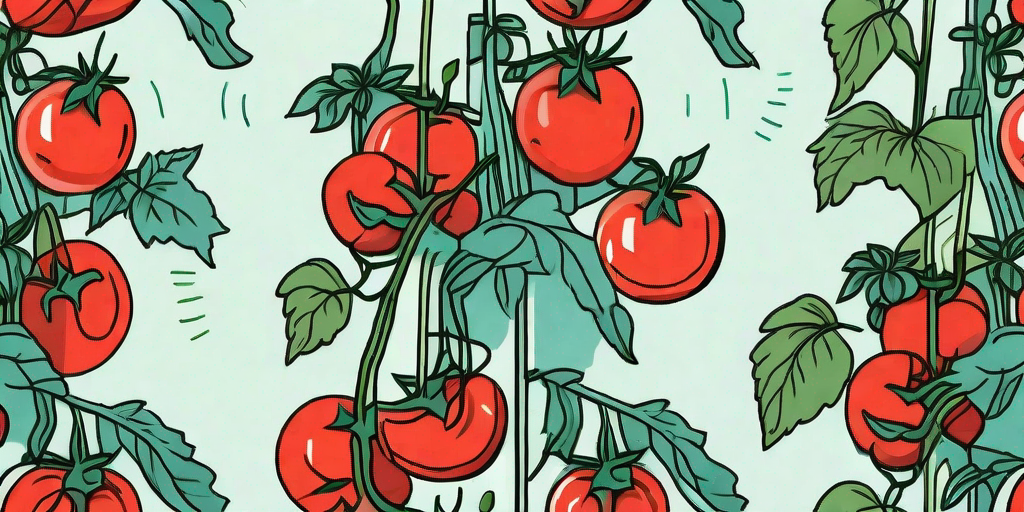
Ah, the humble tomato. A staple in many a kitchen, and a favorite among gardeners worldwide. But when is the best time to plant this versatile fruit? Let's dive into the world of tomato cultivation and find out.
The Tomato Planting Season
Contrary to popular belief, tomatoes are not a year-round crop. They are warm-weather plants, and they need a certain amount of heat to grow and produce fruit. This means that the best time to plant tomatoes is in the spring, when the danger of frost has passed and the soil has started to warm up.
However, the exact timing can vary depending on where you live. In cooler climates, you might need to wait until late spring or early summer. In warmer areas, you can start planting as early as February or March. The key is to make sure the soil temperature is at least 60 degrees Fahrenheit, as tomatoes need warm soil to germinate.
Preparing the Soil
Before you start planting, it's important to prepare the soil. Tomatoes prefer well-drained, fertile soil with a pH level between 6.0 and 6.8. You can adjust the pH level of your soil by adding lime (to raise the pH) or sulfur (to lower it).
It's also a good idea to add compost or well-rotted manure to the soil. This will provide the tomatoes with the nutrients they need to grow and produce fruit. If your soil is heavy clay or sandy, you might need to add some organic matter to improve its texture and drainage.
Testing the Soil
Before you start adding anything to your soil, it's a good idea to test it. You can buy a soil testing kit from a garden center or online, or you can send a soil sample to a laboratory for testing. This will tell you the pH level of your soil, as well as its nutrient content.
Once you know what your soil needs, you can start adding the necessary amendments. Be sure to mix them in thoroughly, as tomatoes have deep roots and need nutrients throughout the soil profile.
Planting the Tomatoes
Once your soil is ready, it's time to plant the tomatoes. Start by digging a hole that's deep enough to cover the root ball of the plant. If you're planting seedlings, the hole should be deep enough to cover the stem up to the first set of true leaves.
Place the tomato plant in the hole, backfill with soil, and firm it gently. Then water the plant thoroughly. After planting, you can add a layer of mulch around the base of the plant to conserve moisture and suppress weeds.
Spacing the Plants
When planting tomatoes, it's important to give them plenty of space. Tomatoes need good air circulation to prevent diseases, and they also need room to grow and spread out. As a general rule, you should space tomato plants about 2 to 3 feet apart.
If you're planting indeterminate tomatoes (the kind that keep growing and producing fruit until frost), you might need to give them even more space. These plants can get quite large, and they need plenty of room to spread out and grow.
Caring for Your Tomato Plants
Once your tomatoes are planted, they'll need some care to keep them healthy and productive. This includes regular watering, feeding, and pruning.
Tomatoes need a consistent supply of water, especially when they're setting fruit. The soil should be kept evenly moist, but not waterlogged. A good rule of thumb is to water deeply once a week, or more often during hot, dry weather.
Feeding Your Plants
Tomatoes are heavy feeders, and they'll need regular feeding to produce a good crop. You can use a balanced, slow-release fertilizer, or you can feed them with compost or well-rotted manure. Be sure to follow the package instructions for the correct application rate.
It's also a good idea to add some calcium to the soil to prevent blossom end rot, a common problem in tomatoes. You can do this by adding some crushed eggshells or a calcium supplement to the soil.
Pruning Your Plants
Pruning is not necessary for all tomato plants, but it can help increase airflow and sunlight penetration, which can help prevent diseases. It can also help direct the plant's energy towards producing fruit, rather than growing more leaves.
To prune your tomato plants, simply remove the suckers (the small shoots that grow out from the base of the plant or in the crotches of the branches). You can do this by pinching them off with your fingers or cutting them off with a pair of garden shears.
FAQs
When is the best time to plant tomatoes?
The best time to plant tomatoes is in the spring, after the danger of frost has passed and the soil has started to warm up. The exact timing can vary depending on where you live.
How do I prepare the soil for tomatoes?
Tomatoes prefer well-drained, fertile soil with a pH level between 6.0 and 6.8. You can adjust the pH level of your soil by adding lime (to raise the pH) or sulfur (to lower it). It's also a good idea to add compost or well-rotted manure to the soil to provide the tomatoes with the nutrients they need.
How do I care for my tomato plants?
Tomatoes need regular watering, feeding, and pruning. Water them deeply once a week, or more often during hot, dry weather. Feed them with a balanced, slow-release fertilizer, compost, or well-rotted manure. Prune them by removing the suckers (the small shoots that grow out from the base of the plant or in the crotches of the branches).
Conclusion
Planting tomatoes is a rewarding endeavor, but it does require some planning and preparation. By choosing the right time to plant, preparing the soil properly, and caring for your plants, you can enjoy a bountiful harvest of juicy, delicious tomatoes. So why wait? It's tomato time!











